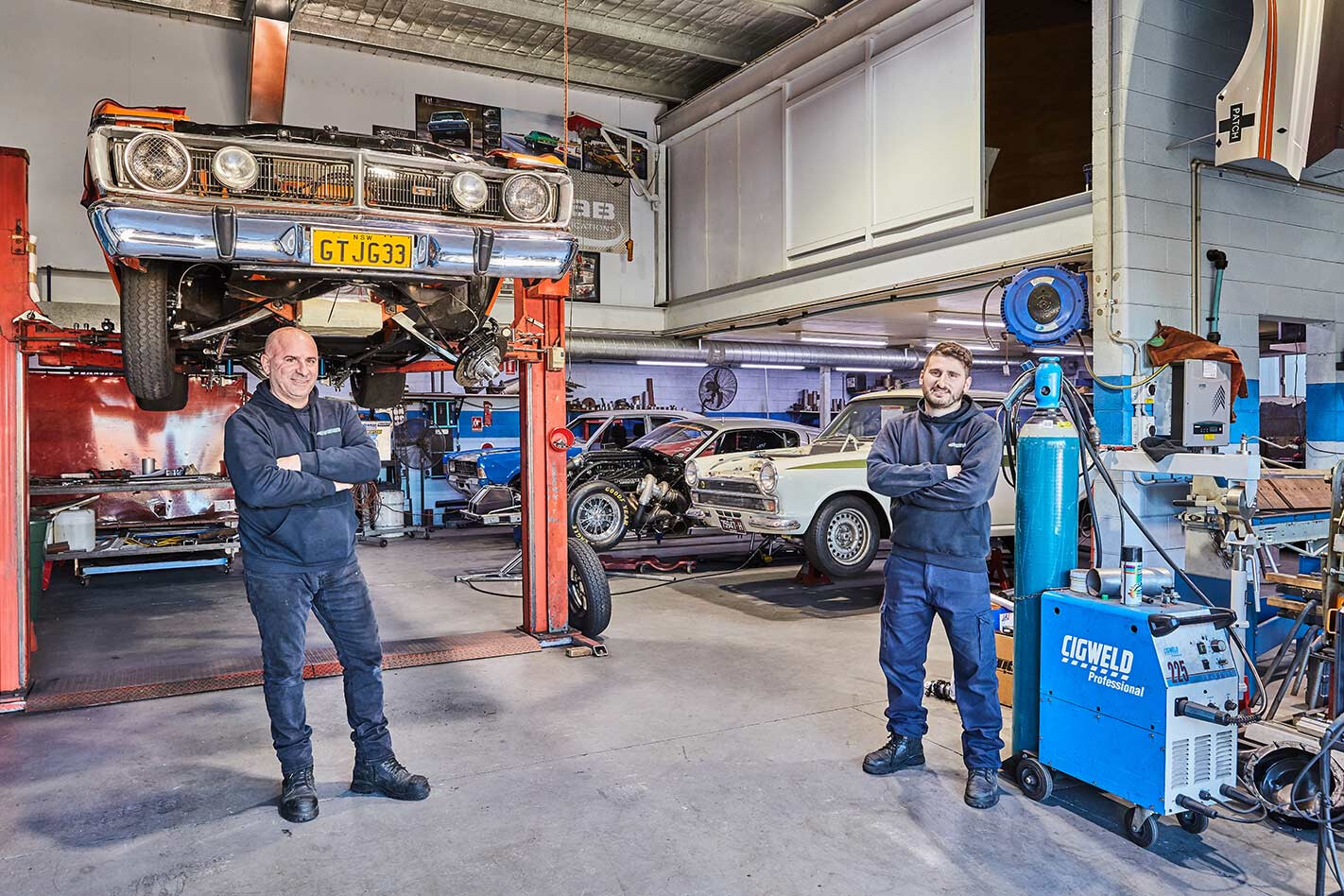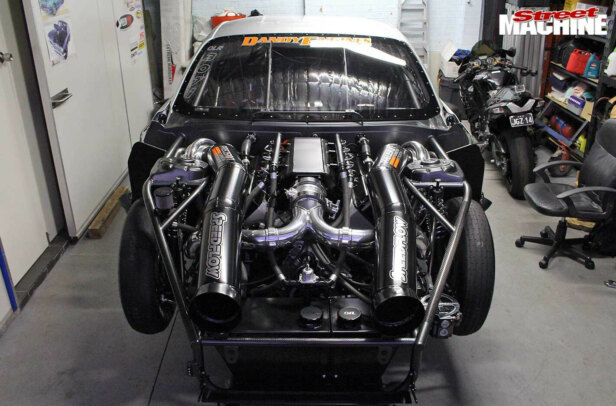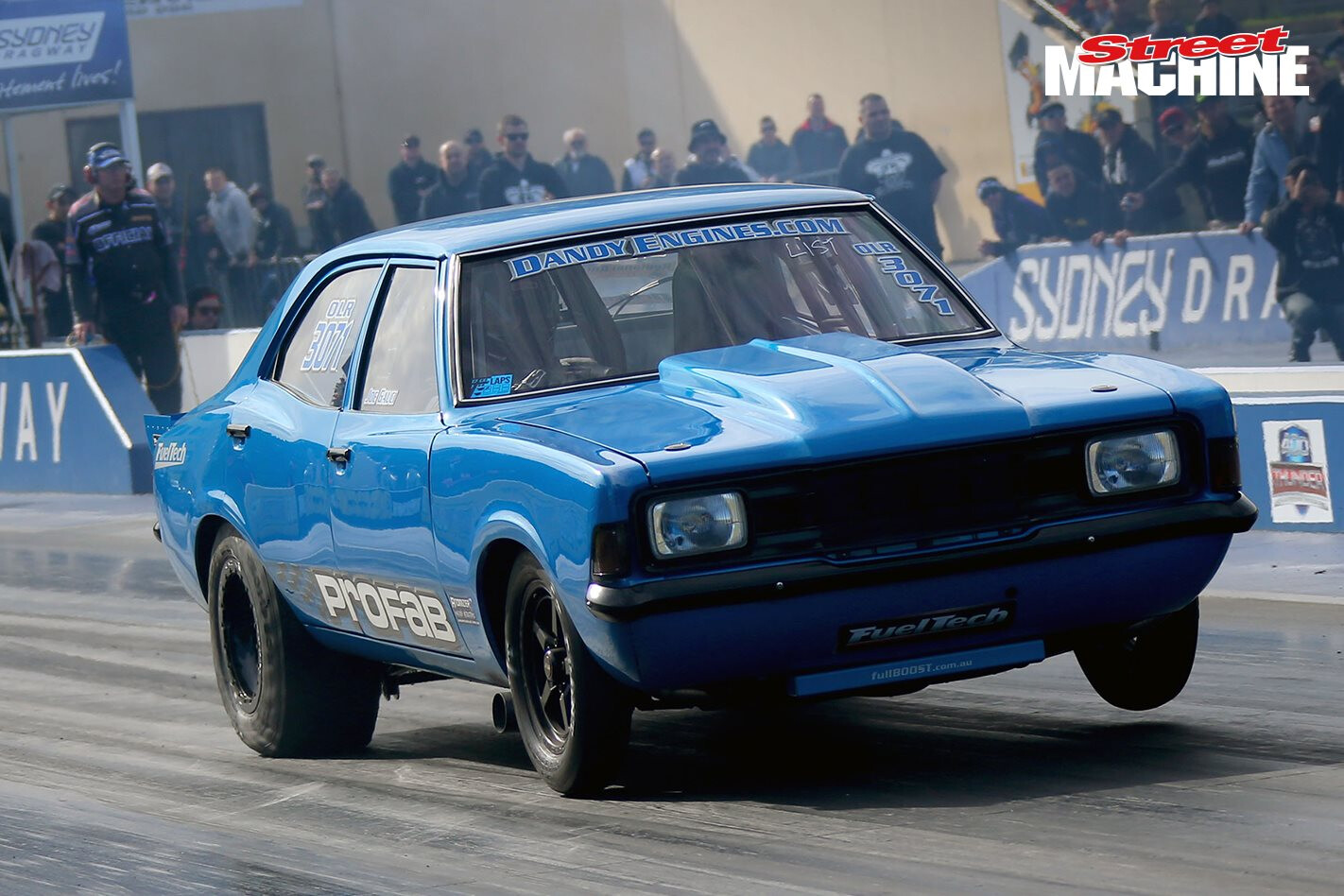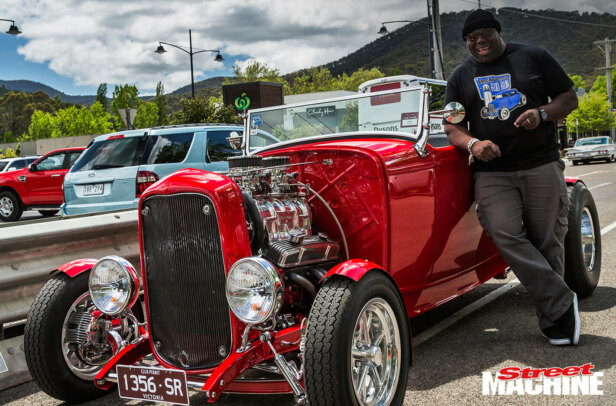FROM the street, Joe Gauci’s Profab Motorsport Fabrications is a fairly modest-looking operation. You’d certainly never pick that it’s where a good number of Australia’s swiftest street, strip and radial weapons were born. Nestled in suburban Wollongong, the business operates from a (very large and very impressive) backyard shed, and is built on Joe’s stellar reputation as a race fabrication guru.
First published in the February 2021 issue of Street Machine. Photos: Will Horner
Joe’s own Mustang is quickly emerging as a force to be reckoned with on the radial scene, having already run into the threes very early on in its development. And somewhat fittingly, his son and right-hand man, Jonathon, has just bought back Joe’s legendary Pro Street Cortina and is intent on revamping it as a Barra-powered street-and-strip warrior.
How did you get your start in the industry?
I started my apprenticeship as a fitter and machinist when I was 16 at the steelworks at BHP. They had an awesome training facility, and we got thorough training in every aspect of fitting and machining. I love fabrication and I always had a passion for cars. I started tinkering myself and reading books and modifying cars. That started off as me doing my own thing, and then mates started to modify cars and would ask me to work on their projects, and over the years it got out of control; it became too much. That’s when I started Profab, in 2001. Basically we do anything to do with cars: fabricating diffs, doing brake conversions, wheel tubs, engine fitment, turbo manifolds and plumbing and rollcages, right through to building an Outlaw car or a Pro Mod.
Tell us about your legendary Cortina.
The Cortina started off as a 13-second car with a crossflow 250 turbo, and I just wanted to always improve every time we went back to the track. We were always finding ways to go quicker. We spent a lot of time trying to make more and more horsepower, but eventually we realised that we needed to improve the car, and that’s where Profab started. Eventually we were running in Modified Street, and as a 200ci six it went a best of 8.58@162mph. I had dramas keeping crankshafts in it, so we decided enough was enough. At that time we’d just linked up with Frank at Dandy Engines, so we decided to go with a twin-turbo V8 and ended up building a 370ci small-block. The first time we raced it was at Calder, and Steve Petty was out. The Modified Street record was around a 7.8 or 7.9 at the time, and we’d been running 330ft and half-track passes; Petty said it’d go 7.40s if we ran it out the back door. That was four or five tenths quicker than the record at the time! Sure enough, it went 7.45@192mph, which was unbelievable. With the six-cylinder it went 162mph, and it was a pretty hairy ride because Calder isn’t the smoothest of tracks – and I thought that was pretty quick! With the V8 it went 162 to half-track! After that pass, I got out of the car at the end of the track and got down on my hands and knees and thanked God that I got through it in one piece!
And it got even quicker, right?
Over the years we went as quick as a 7.1 in Modified Street trim. Another time Steve Petty was out, we were at Willowbank, and he suggested we give the 275 radials a go. I looked at the tyre and said: “Are you serious?” He talked me into it, so we went to the startline and I let go of the button and it blew the tyres off. I reversed back and he went in and adjusted the rpm, and it went out and went 7.1@202mph – the quickest it had ever gone. It was so smooth to drive compared to the slick, and from that day on I thought we had to get onto the radials. When the APSA stopped running, we put the radials on and swapped out some turbos and we had the Pro Line guys out again. We ended up going 6.9, then 6.85 with some more development. Then we started eighth-mile racing and it did go quicker to the eighth; it would have been a 6.70 car at that point.
How did the decision to move the Cortina along and build your radial car come about?
The radial scene was growing and a lot more cars were coming in. They had the Outlaw Radial class and the 275 class, and we had to rethink which direction we wanted to go with the car. Really, I wanted to step it up and go fast, and when the opportunity was there to sell the car, I decided to go that way. I decided I wouldn’t mind doing one of these new Mustangs, and Jonathon was out on the hunt for a stat write-off, and he found one on an auction site here in Australia. It had a hit in the front, so we stripped it all back, cut it up and away we went. We got a 481X through Pro Line that Eric Dillard found for us, and then we started gathering all the bits. Jonathon and I spent a lot of weekends and nights on it, and we had it done in about a year. We were lucky to have some good help from a lot of people like Pro Line and Frank and Lou from Dandy Engines, Precision Turbos, Speedflow, Carl Cox – a lot of people jumped on board, which helped us get it to MotorEx. From then on we got into competition.
You’ve fetched some solid numbers out of that thing very early on!
Yeah, we did two Kenda radial events and a few 400 Thunder events, too. First outing we did with it, we went 4.08, and we were over the moon. We started to chip away and went backwards and forwards. To go from a 4.0 to a three was a matter of balancing the car out and making it work; it didn’t need any more power. Once we got on top of that, we ran four 4.0s and then four 3.9s in a row. Having the whole crew there when we ran that first three was amazing. That’s where you need to be in order to be competitive; it’s a 3.9/3.8sec class, and it’s only going to get quicker.
Meanwhile, things have come full circle and your young fella has bought your old Cortina back!
Jonathon was building his own “street version” of my old car, with a Barra six. It was being built the same way as my old Cortina, but then the owner of my old car put it up for sale. Jonathon was able to do a deal with him that included the car he was building, so my old car is coming back to the family and we’re super happy about that. Jonathon has bought it as a roller, so we’re going to put a Barra in it. We’ll start off with a mild engine and get him introduced into the racing world as a driver. He’ll progress along the way I did. There’s no use putting a seven-second Barra in the thing and wishing him all the best; I’d rather he start out slow, learn as he goes and progress to wherever he wants to progress to.
What’s it like working alongside your son every day?
Like anything, it has its moments! Most of the time it’s all smooth sailing in here. He has an understanding of what his father expects and we go about our work. He follows instructions well and we get along well, and that’s the main thing. I’d rather pass on all my knowledge to someone who is close to me. I wish I knew half of what he does now when I was his age. His future, if he decides to continue doing this, looks really good.
What’s the difference between building a radial car and a traditional slick-tyre car?
All in all, there’s not a great deal of difference. The safety side of it is all the same. Engine placement, engine height, four-link configuration and shocks are the major differences between the two. I built my Mustang as a purpose-built radial car, but you can turn a slick car into a radial car. And I could put slicks on the Mustang by doing four-link changes and shock changes. At the end of the day, there is no recipe that is going to guarantee that a car will work right out of the box; it’s going to take development – moving weight around, suspension changes and even as far as adjusting engine placement. Those are the major differences that come into play between the two types of cars. There’s definitely been a surge in radial cars, and we’ve converted a lot of slick cars over to radial. Every car that we’ve done that with has gone faster. A slick car compresses the shock and slowly comes back to ride height, whereas a radial car will have a dip in the compression but extend from there as it leaves the line.
You’ve got one hell of a celebrity customer in Carl Cox!
Carl’s passion for motorsport is like no one I’ve ever met before. He’s got Mustangs, a couple of T-buckets, roadsters – you name it. But when I first met Carl, we started with his Capri. It was built as a Pro Street slick car with a single-turbo Clevor. Over the years, we’ve switched him to a radial, and we’ve had a 275 and a 315 on that car. We’ve built a single-turbo HG that he wants to do Drag Challenge in, and since then we’ve done the Pro Mod car that we have in the shop.
Switching back from a radial tyre to a slick is difficult, whereas going the other way is an easier transition. Slick cars need wheel speed; they’re basically spinning the entire track. If you have wheel speed in a radial car, abort! For Carl to adjust to that sensation has taken some time. It’s a quick car; it’s been mid-fives in the States and it was one of the quickest door cars in the world, but he’s doing a fabulous job adjusting and is driving really well.
What are your goals for your Mustang?
When I first set out to build it I set some goals, but with drag racing and motorsport in general, your goals are always changing. The first goal was to run a three, and we’ve ticked that box, so now we’ll just keep chipping away and making it as quick as we can. We’ve got momentum and we need to keep going now, because I can see 3.80s. We’ve got some work to do, but we’ll keep developing at our own pace and progress along.
1. Two of the many toys belonging to world-renowned DJ, motorsport enthusiast and champion fella, Carl Cox. The Mustang was at one point one of the world’s quickest straight-line door cars, while the rad little Cortina to the right of the ’Stang is currently being built by the Profab lads for Carl to compete in Australian hillclimb events (something he regularly does in New Zealand). It runs a Sierra Cosworth engine with a Precision turbo and Modena sequential gearbox, and should be good for around 600hp. “We’ve put a ’cage and some subframe connectors in it, done the tubs and the 9in, fitted the motor and modified the crossmember for rack-and-pinion steering,” says Joe. “We’re almost there with it, and it’ll be a fun thing when it’s finished. I hope I get to drive it!”
2. Joe’s Mustang, pictured here at MotorEx 2019, is a fine example of a cutting-edge Outlaw Radial car. With a scratch-built Profab chassis and Pro Line 481X powerplant, it went 4.0 at its first ever meeting and has since dipped into the 3.9s. Joe plans to further develop the car, and has his sights set on the 3.8s, where the Australian outright radial record currently lies.
3. Jonathon is keen to follow in his dad’s footsteps. Having attained his fitter machinist qualification, he then completed a mechanical course and is currently studying auto electrics after hours. “Working with Dad is great,” he says. “I get to meet a lot of cool people and work on some great cars, and I really enjoy building relationships with our customers.”
4. Joe’s old Cortina Pro Street car doing work at Sydney Dragway. Over a good many years, Joe developed it from a 13sec turbo crossflow street car into a 6sec, radial-tyred, twin-turbo V8 monster. It will soon return to the Profab stable and be outfitted with a Barra six – a return to its turbo six-pot roots.
5. This is the Barra-powered Cortina street car that Jonathon is midway through building. He set out to build it for himself, but will eventually use it in a swap to get his dad’s old Cortina race car back in the family. “There’s a lot of history in Dad’s old car, so it’ll be good to get it back,” he says. “When I was younger and I used to watch Dad race, I always pictured myself racing it. So when the opportunity came up I couldn’t resist; it’s meant to be. We’ll put 275s on it and I’ll learn how to drive first and sneak up on it. Kenda has a 5.50 index class, so I think that’ll be where we’ll start”




Comments